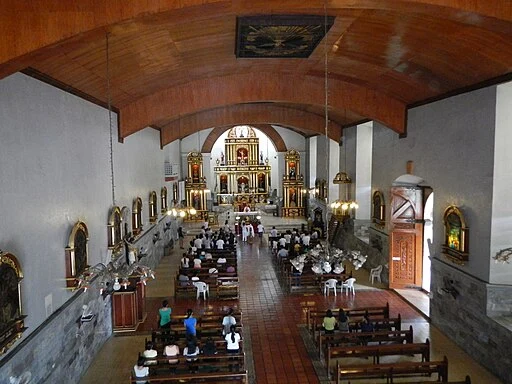Cebu City Charter Day Celebration Philippines
Many cities around the world have specific days set aside to commemorate their founding or establishment, and Cebu City in the Philippines is no exception. Cebu City Charter Day celebrates the city’s transformation from a municipality to a chartered city on February 24, 1937, a significant milestone in its history.
This special day honours the efforts of Senator Vicente Rama, known as the Father of the Cebu City Charter, who played a crucial role in achieving the city’s independence from the province of Cebu. Recognized under Republic Act No. 7287, February 24 is designated as a special non-working holiday in Cebu City, allowing residents and visitors alike to participate in various events and activities that showcase the city’s rich heritage and cultural significance.
Key Takeaways:
- Significance of Cebu City Charter Day: Cebu City Charter Day commemorates the city’s transformation from a municipality into a chartered city, marking its independence from the province of Cebu in 1937.
- Historical Roots: The history of Cebu City predates its charter day, with origins dating back to the Spanish colonization in 1521, including key events such as the baptism of Rajah Humabon and the introduction of Christianity symbolized by the image of Sto. Niño.
- Celebrations and Contributions: Senator Vicente Rama, known as the Father of the Cebu City Charter, played a significant role in its establishment as a city. The annual Charter Day celebrations include various activities to honour Rama’s contributions, showcasing Cebu City’s rich history and vibrant culture.
Cebu City Charter Day At A Glance
| Facts | Brief Explanation |
|---|---|
| Name of the Festival | Cebu City Charter Day |
| Type of Festival | Cultural |
| City of Origin | Cebu City, Philippines |
| Festival Etymology | Named after the granting of the city charter to Cebu City |
| Date First Celebrated | February 24, 1937 |
| Dates Celebrated Every Year | February 24 |
| Founder of the Festival | The PhilippineGovernment |
| Brief History of the Festival | Cebu City Charter Day marks the anniversary of the city’s charter, granted in 1937 by the Commonwealth of the Philippines. It commemorates Cebu City’s elevation to city status and its independence from provincial administration. The day is celebrated with various activities that highlight the city’s culture, history, and achievements. |
| Brief History of the City | Cebu City, known as the “Queen City of the South,” is rich in history as the oldest city in the Philippines. It played a significant role in Philippine history as the site of the first Spanish settlement and the country’s oldest Catholic relics. The city has evolved into a major urban center and gateway to the central and southern parts of the country. |
| Ethnic Information of the City and Region | Predominantly Cebuano-speaking population, with a mix of other ethnic groups due to migration and trade. The city is a cultural melting pot, reflecting a blend of indigenous, Spanish, and modern influences. |
| Location in the Country | Located in the central Visayas region of the Philippines, Cebu City is situated on the eastern shore of Cebu Island. |
| How to Reach the City | Accessible via Mactan-Cebu International Airport for international and domestic flights; sea travel through Cebu City’s port for inter-island ferries; and by bus from other parts of Visayas and Mindanao. |
| Nearby and Surrounding Cities or Towns | – Mandaue City (approx. 7 km north) – Lapu-Lapu City (approx. 20 km northeast, across the Mactan Channel) – Talisay City (approx. 12 km south) – Consolacion (approx. 12 km north) |
| Google Map Link to the City Location | Google Maps Link |
| Bullet List of Festival Main Events and Activities | – Street parades – Cultural shows – Exhibits showcasing local arts and crafts – Government and civic ceremonies |
| Famous Tourist Attractions and Landmarks | – Magellan’s Cross (Symbolizes the Christianization of the Philippines) – Basilica Minore del Santo Niño (Home to the oldest religious relic in the Philippines) – Fort San Pedro (The oldest military defense structure) – Taoist Temple (Reflects the Chinese influence in the city) |
| Famous Food Dishes of the City | – Lechon (Roasted pig, known as the best in the Philippines) – Cebuano Kinilaw (Raw fish salad) – Puso (Hanging rice) |
| Related Festivals in the Same Region | – Sinulog Festival (Third Sunday of January in Cebu City) – Kadaugan sa Mactan (April in Lapu-Lapu City) – Dinagyang Festival (Fourth Sunday of January in Iloilo, Visayas region) |
The Origin of Cebu City’s Charter
The establishment of Cebu City as a chartered city on February 24, 1937, marked a significant milestone in the city’s history, signifying its independence from the province of Cebu. This transformation from a municipality into a city was a pivotal moment achieved through the relentless efforts of Senator Vicente Rama, often hailed as the Father of the Cebu City Charter.
The Efforts of Senator Vicente Rama
Any discussion of Cebu City’s Charter Day celebration would be incomplete without acknowledging the instrumental role played by Senator Vicente Rama. His dedication and advocacy led to the passing of Commonwealth Act No. 58, officially granting Cebu City its city status on February 24, 1937.
Rama’s vision and leadership paved the way for the city’s progress and development, shaping its identity as a thriving urban centre in the Philippines.
The Journey to Cityhood
Charter Day in Cebu City commemorates the city’s journey to cityhood, reflecting on its rich history that predates its establishment as a chartered city. From its origins as a major trading centre and outpost during the Spanish colonization to its pivotal role in uprisings against colonial rule, Cebu City has played a crucial part in shaping the cultural and political landscape of the Philippines.
The Significance of February 24, 1937
Little did the residents of Cebu City know that February 24, 1937, would mark a pivotal moment in the city’s history. It was on this day that Cebu City achieved independence from the province of Cebu and was formally established as a chartered city. This transformation not only signified a shift in administrative status but also represented a milestone in the city’s journey towards self-governance and development.
The provisions of the Cebu City Charter
With the establishment of the Cebu City Charter on February 24, 1937, important provisions were set in place to outline the governance structure, rights, and responsibilities of the newly formed city. This charter laid the groundwork for establishing Cebu City as an independent entity, separate from the provincial government, with its own local administration and decision-making powers.
This legal framework empowered the city to pursue its development agenda and cater to the unique needs of its growing population.
The Transition from Town to City
City status was not merely a ceremonial title for Cebu; it represented a significant transition from a municipality to a fully-fledged urban centre. The process of urbanization and expansion that ensued after gaining chartered status allowed Cebu City to grow into a bustling hub of commerce, culture, and political activity. The shift from town to city marked a new chapter in the city’s history, paving the way for increased economic opportunities, infrastructure development, and civic engagement.
Plus, the journey from town to city status was not without its challenges. However, with strong leadership, like that of Senator Vicente Rama, often hailed as the Father of the Cebu City Charter, Cebu was able to navigate through the intricacies of cityhood and emerge as a dynamic urban centre with a rich cultural heritage and a vibrant community spirit.
Celebrations and Commemorations
Despite its humble beginnings as a municipality, Cebu City has grown into a vibrant urban centre, and its Charter Day celebrations are a testament to its rich history and cultural significance. The annual festivities on February 24th marking the city’s transformation into a chartered city in 1937 bring together both residents and visitors to honor this important milestone.
Official Ceremonies and Government Events
Ceremonies and official events play a pivotal role in the Cebu City Charter Day celebrations. The day is filled with commemorative ceremonies, such as Mass services and wreath-laying ceremonies, to pay tribute to the city’s founding fathers, including Senator Vicente Rama.
Government officials also participate in events to highlight the significance of the city’s independence from the province of Cebu and its journey to becoming a chartered city.
Cultural Festivities and Public Participation
Any discussion of Cebu City Charter Day would be incomplete without mentioning the vibrant cultural festivities and public participation that mark the occasion. Cultural events, talent contests, and business fairs showcase the city’s rich heritage and entrepreneurial spirit while inviting locals and tourists alike to take part in the celebrations. The city comes alive with music, dance, and traditional performances that reflect the diverse cultural tapestry of Cebu City.
Festivities on Cebu City Charter Day not only serve as a reminder of the city’s past but also as a celebration of its present and future. The involvement of the community in these events reinforces a sense of unity and pride in the city’s accomplishments, making it a day of joy and reflection for all who call Cebu City home.
Historical Context
Pre-Spanish Trading Center
All the hustle and bustle of Cebu City today can be traced back to its roots as a major trading centre long before the Spanish arrived in the Philippines. The island of Cebu was a strategic outpost for shipping and navigation, making it a prime location for trade activities.
By the time Spanish colonizer Ferdinand Magellan set foot on its shores in 1521, Cebu was already a hub of commerce, connecting various parts of the archipelago through trade networks. This pre-Spanish era laid the groundwork for the vibrant city we see today, with a rich history of trade and economic activity.
Spanish Colonization and Transformation
Following Magellan’s arrival, Cebu City underwent a significant transformation under Spanish rule. The baptism of local ruler Rajah Humabon and the introduction of Christianity marked a turning point in the city’s history, with the establishment of churches and religious institutions that would shape its cultural landscape for centuries to come.
The gifting of the image of Sto. Niño to Queen Juana symbolized the blending of Spanish and indigenous cultures, creating a unique identity for Cebu City. This period of colonization not only impacted the city’s religious beliefs but also laid the foundations for its political and economic development, setting the stage for its eventual rise to cityhood in 1937.
Plus, the Spanish influence on Cebu City’s architecture, traditions, and governance can still be seen today in its colonial-era buildings, annual festivities, and local customs. The city’s journey from a small trading post to a chartered city is a testament to its resilience and adaptability throughout centuries of historical change.
Vicente Rama: The Father of the Cebu City Charter
His Life and Contributions to Cebu
After spearheading the efforts to establish Cebu City as a chartered city in 1937, Senator Vicente Rama solidified his legacy as the Father of the Cebu City Charter. Rama’s dedication and determination played a pivotal role in the city’s transformation from a municipality to a city, marking a significant milestone in Cebu’s history.
Crafting the Commonwealth Act No. 58
After recognizing the need for Cebu to attain city status, Senator Vicente Rama took charge of crafting the Common wealth Act No. 58, paving the way for the official establishment of Cebu City as a chartered city. His strategic approach and unwavering commitment to the cause were instrumental in navigating the legislative process and securing the city’s independence from the province of Cebu.
City status brought with it an increased level of autonomy and opportunities for growth and development, setting the stage for Cebu City to flourish as a vibrant hub for commerce, culture, and education in the Philippines.
Modern-Day Cebu City
Economic and Cultural Achievements
Now, Cebu City stands as a vibrant hub of commerce, culture, and education in the Philippines, continuing its rich history of economic and cultural accomplishments. The city, known as the Queen City of the South, plays a significant role in the country’s development, with its charter day celebration marking its transformation from a municipality into a chartered city in 1937.
Any discussion of Cebu City’s modern-day achievements would be incomplete without highlighting its economic growth and cultural significance. The city’s strategic location and booming industries have solidified its status as a key player in the Philippines’ trade and commerce sector, attracting both local and foreign investments.
Additionally, Cebu City’s cultural heritage, including its history of resistance against colonial rule and vibrant religious celebrations, adds to its unique charm and appeal as a tourist destination.
The Role of the City in Contemporary Philippines
Cultural celebrations like the Cebu City Charter Day not only commemorate the city’s past but also underscore its present-day importance in the Philippines. With a population that continues to grow steadily, Cebu City is a melting pot of diverse cultures and traditions, contributing to the dynamic tapestry of the country’s cultural landscape.
The city’s leadership in various sectors, including education, trade, and tourism, further cements its influence in shaping contemporary Philippine society.
Cebu City’s enduring legacy as a centre for commerce, culture, and education in the Philippines is a testament to its rich history and ongoing commitment to progress. As the Queen City of the South, Cebu City continues to stand as a beacon of economic prosperity, cultural vibrancy, and historical significance in the heart of the Philippines.
Interesting Facts About The Cebu City Charter Day
Cebu City Charter Day, celebrated every February 24, marks the day Cebu City was granted its charter, making it an independent city. Here are ten interesting and perhaps lesser-known facts about this significant day in Cebu City, Philippines:
- 🏛️ Cebu City became the first city in the Philippines outside of Manila to be granted a city charter on February 24, 1937, by virtue of Commonwealth Act No. 58.
- 📜 The city’s charter was signed by then-President Manuel L. Quezon, officially establishing Cebu City as a chartered city.
- 🌊 Cebu City is often referred to as the “Queen City of the South” and is known for its significant role in Philippine history as the oldest city in the country, predating the charter by centuries.
- 🤝 The Charter Day celebration is not just a local city event but also serves as a symbol of Cebuanopride and resilience, drawing visitors from across the nation and the world.
- ⚔️ Cebu City played a pivotal role in the Philippine revolution against Spanish colonization and the city’s charter is seen as a testament to its enduring spirit of independence and self-determination.
- 🎉 Charter Day is celebrated with a variety of events, including cultural shows, parades, and exhibitions that showcase Cebu’s rich history and vibrant culture.
- 🏰 The city’s charter granted it autonomy, allowing it to govern itself independently, which was a significant step in the development of local governance in the Philippines.
- 🌐 Cebu City is a hub for commerce, trade, and education in the Visayas region, thanks in part to the autonomy and governance structures established by its city charter.
- 🌳 The Fuente Osmeña Circle, one of the city’s most famous landmarks, often serves as the focal point for Charter Day celebrations, highlighting the blend of historic significance and modern urban development.
- 🍴 Cebu City is renowned for its culinary heritage, including the famous Cebu Lechon, which is often featured during Charter Day festivities, showcasing the city’s unique flavours and gastronomic contributions to the Philippine culinary scene.
Final Words
Presently, Cebu City Charter Day stands as a testament to the city’s rich history and vibrant culture, commemorating its transformation into a chartered city and honouring the efforts of Senator Vicente Rama, who championed its official establishment. The annual celebration on February 24 serves as a reminder of Cebu City’s journey from a strategic trading post during the Spanish colonization to a thriving hub for commerce, culture, and education in the Philippines today.
As the Queen City of the South, Cebu City continues to play a significant role in the country’s development, with its Charter Day celebration serving as a time to reflect on its past while looking towards a bright future. Through various activities and events, the city pays tribute to its history, its people, and the enduring spirit that has shaped it into the dynamic and vibrant city it is today.
Frequently Asked Questions
What is Cebu City Charter Day?
Cebu City Charter Day commemorates the establishment of Cebu City as a chartered city on February 24, 1937, marking its independence from the province of Cebu.
Why is Cebu City Charter Day significant?
Cebu City Charter Day celebrates the city’s transformation from a municipality into a city, a significant milestone achieved through the efforts of Senator Vicente Rama, often referred to as the Father of the Cebu City Charter.
How is Cebu City Charter Day celebrated?
Cebu City Charter Day is celebrated annually on February 24 as a special non-working holiday in Cebu City, with various activities such as talent contests, business fairs, cultural events, and commemorative ceremonies like mass and wreath-laying to honour the city’s history and development.






